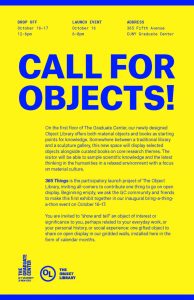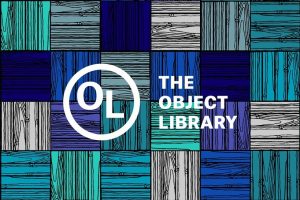Mapping Abraham Lincoln’s speeches.
This project was more challenging than the text analysis project, but I still enjoyed it. I decided to map information about Abraham Lincoln’s life because I am an amateur presidential historian, so its information I’m familiar with. If I’m doing a test run on new technology, I want to use knowledge I’m comfortable with, so I don’t feel overwhelmed.
I used ARCgis online to put this together. It was relatively easy to use, but I did have some issues with it, which I’ll get to later.
I assembled the information that I wanted to use. The sites included Abrahamlincolnonline.org, the National Park Service’s website, AmericanRhetoric.com, and the Morgan Library and Museum’s 2015 exhibition called Lincoln Speaks.
It took me three tries, though this part was not about the system itself, rather it was about me trying to do too much.
The first time, I wanted to do a map of all the major points in Lincoln’s life. I soon realized that that way madness lies. The map was just simply too cluttered. I couldn’t follow what I was doing, and if I was lost, I figured anyone looking at it would be as well, so I scrapped it.
Once I realized I needed to narrow my focus, I decided to focus solely on his adult life. This was still too cluttered, but it was certainly an improvement.
On the third try, I thought that his speeches would be a good focus. After all, Lincoln was perhaps the greatest speechwriter to be president. We all know quotes from them, like “With malice toward none” and “a house divided against itself cannot stand”. When I teach Voice and Diction, all of my students have to recite the Gettysburg Address[i].
After that, I organized what I wanted to represent. Since Lincoln’s debates with Stephen Douglas in 1858[ii] launched Lincoln onto the national stage, I figured they would be a good place to start. After putting them up on the map, I tried to label them one through seven and draw out the path Lincoln and Douglas took when they were debating.
That turned out to be too messy, so I deleted the lines and the numbers.
After that, I decided to add selected stops on Lincoln’s trip from Springfield to Washington, DC for the inauguration. Lincoln spoke at many of these stops, though, when pressed for information about the looming war, he was very vague. I tried to draw a line here, showing the train’s path, but again, too much for my tastes.
Speeches Lincoln gave while president were up next. I picked a few because they were mostly in Washington, DC. Here, I added his trip to Richmond in 1865 after it fell to Union forces even though he really didn’t give a big speech there.
I thought about adding a section on the train that took Lincoln’s body from Washington DC to Springfield, but that trip was almost identical to the inauguration trip[iii], so why bother?
However, I realized that some of his most famous speeches, like the speech at Cooper-Union, were still not included. As a result, I added the “speeches before Lincoln became president” category. Finally, because I saw the one from Illinois College in 2009[iv], I decided to add his honorary degrees.
I was struck by how limited Lincoln’s travels were. In the 21st century, we’re used to our leaders visiting many places and meeting with the people there, but, then, travel was considerably more difficult[v], so traveling to many places wasn’t going to happen. He was also a president at war, which encouraged him to stay close to home.
Of course, he may have been considered well-traveled by 19th century standards. I don’t know.
I think this gives an interesting visual overview of Lincoln’s speeches and the audiences present[vi]. We are used to immediacy, but then, they just didn’t have it.[vii] Notice that he didn’t spend much time in the South, which, given his stance on slavery is unsurprising.
ARCgis was for the most part easy to use. It helped me organize things with the map notes function. I created a different set of map notes for each category, which helped me with organization. The Map Notes function also allowed me to put information on the map. If you click on one of the dots, a pop-up will give tell you when Lincoln was there and why. If you click on a location with more than one dot, say Springfield, it will give information for one dot, and then say that it’s the first of X, and let you click to the next one.
The save and share functions are easy, and they have a “create an app” function, though I did not try it.
That’s all great.
Some down sides. The map’s default setting may change when you save it. For instance, I was setting up the information on Gettysburg when I was interrupted and had to save. When I reopened the map, it defaulted to Gettysburg. I wasn’t thrilled about this, and almost scrapped the map. However, I was interrupted again[viii], and saved it. When I return to the project later, the map was set up properly again.
My biggest issue was trying to insert a legend. I wanted to have a legend running down the left hand side of the map, defining the different colored dots. I could not manage it. Well, that’ not strictly true. I did put a legend together, but it was this giant clunky mess. I think this happened because I was using the web-based free version[ix]. When I looked up tutorials online, they were talking about clicking on things that just weren’t on my screen.
I got around this by turning it into a presentation (another nice feature). The presentation let me add a title onto each slide, so I created two slides (not difficult), and put in the legend on the second slide. It’s not where I want it exactly, but it’s there, so everyone can understand the map a little better.[x]
Would I use ARCgis again? I’d consider it. If I were to work on mapping things frequently, I would probably buy it, because that version looks like it has all sorts of interesting features.
[i] I actually do this because rhythm and breathing in the right places are important in Gettysburg. It’s not a long speech, but it isn’t an easy one to recite because it’s essentially twelve run-on sentences.
[ii] They were running for U.S. senate from the state of Illinois. Douglas won that election.
[iii] The Pittsburgh and Cincinnati stops were dropped from the funeral train, and Chicago was added.
[iv] Which… I mean, I guess so… but REALLY? 2009?
[v] This is why presidential inaugurations used to happen in March. They figured that the worst of winter was over, so travel wouldn’t be as rough.
[vi] I am also aware that I left places out
[vii] In fact, one of things that revolutionized warfare during the Civil War was the use of the telegraph. Its use was concentrated in the North, and the ability to communicate faster than the South helped the Union cause.
[viii] I’ve been busy.
[ix] It’s also possible that I just couldn’t manage to do it. It’s always easy to blame the software, but, sometimes, the fault is with the person using it.
[x] We’ve all dealt with technology. Sometimes we have to be able to improvise.




